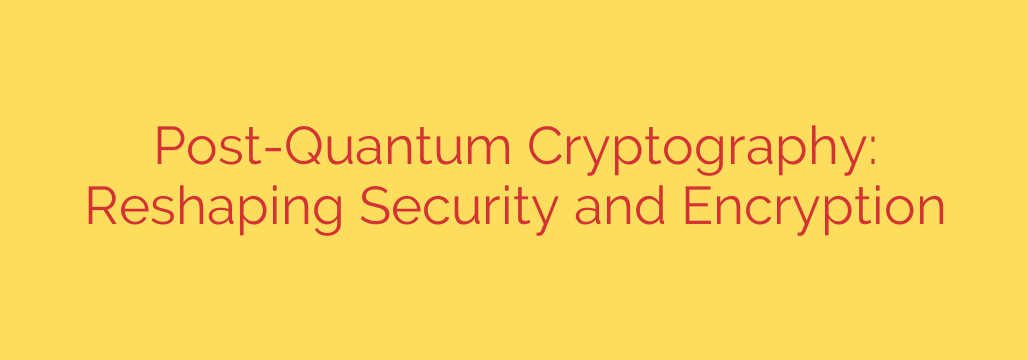
The era of quantum computing is rapidly approaching, bringing with it unprecedented computational power. While this promises incredible advancements across various fields, it also presents a fundamental challenge to our current digital security infrastructure, particularly the encryption methods we rely on daily to protect sensitive information.
Today’s public-key encryption, like RSA and ECC, forms the bedrock of online security, securing everything from online banking and e-commerce to secure communication and digital signatures. However, these algorithms rely on mathematical problems that are hard for classical computers to solve but become easily solvable for powerful quantum computers using algorithms such as Shor’s algorithm. This means that data encrypted today, even if stored for years, could be vulnerable to decryption by a future quantum computer. This looming threat is often referred to as the “Harvest Now, Decrypt Later” problem.
To counter this existential threat, cryptographers worldwide are developing and standardizing new cryptographic algorithms that are resistant to attacks from both classical and quantum computers. This field is known as Post-Quantum Cryptography (PQC). The goal of PQC is to replace vulnerable algorithms with new ones based on different mathematical foundations – problems that remain computationally hard even for quantum machines.
Developing and standardizing these new algorithms is a complex process, but an even greater challenge lies in the transition and deployment. Shifting the world’s digital infrastructure – everything from hardware security modules and software libraries to network protocols and digital certificates – to PQC algorithms is a massive undertaking. It requires careful planning, extensive testing, and significant investment.
This necessary transition is driving the need for organizations to become crypto-agile. Crypto-agility refers to the ability of systems and organizations to switch cryptographic algorithms easily and quickly without requiring major system overhauls. Building this flexibility now is crucial, as cryptographic landscapes may need to evolve more rapidly in the future.
The urgency for adopting PQC is growing. Nations and organizations with the resources are already investing in quantum computing capabilities. Sensitive data with a long shelf life – government secrets, financial records, intellectual property, health information – is particularly at risk. A proactive approach is essential to prevent a future security crisis.
What steps can organizations take to prepare for the post-quantum world?
- Inventory your cryptographic assets: Understand where and how cryptography is used within your organization’s systems, applications, and data. Identify which algorithms and key sizes are currently in use.
- Stay informed on standardization: Follow the progress of international efforts, such as those led by NIST, to standardize PQC algorithms. These standards will guide future implementations.
- Develop a strategic migration plan: Outline the steps needed to transition your systems to PQC. This plan should consider timelines, dependencies, potential costs, and necessary technical expertise.
- Pilot test PQC algorithms: Experiment with the new algorithms in non-production environments to understand their performance characteristics and integration challenges.
- Invest in crypto-agility: Work towards building systems that can easily accommodate changes in cryptographic algorithms, making future transitions smoother.
The move to Post-Quantum Cryptography is not just an IT project; it’s a critical strategic imperative for maintaining long-term digital security and trust. By understanding the threat and taking proactive steps now, organizations can ensure they are prepared to navigate the complex transition and secure their data and communications in the quantum era.
Source: https://feedpress.me/link/23532/17091343/how-post-quantum-cryptography-affects-security-and-encryption-algorithms








